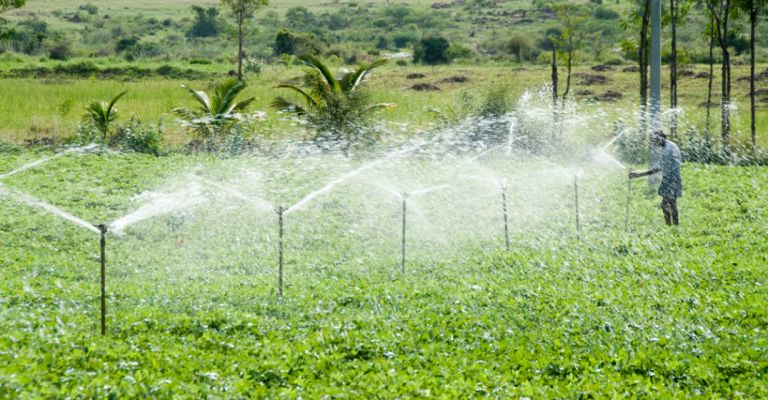
Proper irrigation in agriculture is crucial for plant growth and the production of high-quality, abundant crops. The water needs of plants vary with their growth phases, and they require the most water during crop development, flowering, and fruit setting.
In many regions, natural precipitation does not meet crop water needs, making artificial irrigation essential. Without enough water during the growing season, yields can drop significantly, and entire crops may fail.
What Is Irrigation in Agriculture?
Irrigation involves applying controlled amounts of water to support crop production, landscaping, and lawns. Farmers choose different irrigation methods based on terrain, crop type, water availability, and infrastructure. As climate change drives the need for increased food production, the demand for irrigation water continues to rise.
Irrigated farming accounts for 20% of the world’s cultivated land but contributes to 40% of global food production. Farmers have equipped over 324 million hectares worldwide for irrigation, with about 85% actively irrigated.
5 Common Irrigation Systems for Agriculture
Irrigation systems are vital in agriculture to supply the necessary water for crops. Effective irrigation management ensures that water is applied uniformly and at the right time to minimize resource losses.
Here are five common irrigation systems used in agriculture:
- Flood or Furrow Irrigation: Water covers the entire soil surface and flows across the field by gravity.
- Sprinkler Irrigation: High-pressure sprinklers irrigate crops; the system can be solid or hand-moved.
- Drip Irrigation: Water is delivered directly to the crop’s root zone through low-flow emitters, minimizing waste.
- Center Pivot Irrigation: A central pipeline rotates around a pivot, distributing water across the field.
- Subsurface Irrigation: Water is applied below the soil surface, reducing evaporation and runoff.
Factors to Consider When Setting Up an Irrigation System
Before establishing an irrigation system, farmers must evaluate several factors:
- Soil Properties: Consider soil type, drainage, and water-holding capacity.
- Water Quality: Assess the availability, quality, and quantity of water.
- Crop Characteristics: Evaluate yield potential, rooting depth, and frost resistance.
- Climate Conditions: Consider humidity, temperature, and precipitation.
- Farmer Capabilities: Assess farm labor, financial health, and management skills.
- Irrigation System Properties: Evaluate operating costs and the system’s ability to meet crop water requirements.
Benefits of Modern Irrigation Systems
Modern irrigation systems do more than supply water; they also cool crops and soil, protect against frost, delay fruit and bud development, control wind erosion, help with seed germination, and enable the application of fertilizers and pesticides.
Over time, farmers have moved from manual watering to sophisticated systems that save time, water, and money, while improving crop growth and reducing weeds.
In conclusion, irrigation plays a pivotal role in agriculture by ensuring crops receive the water they need at the right time. By considering all relevant factors and using modern irrigation techniques, farmers can optimize crop production and resource use.


